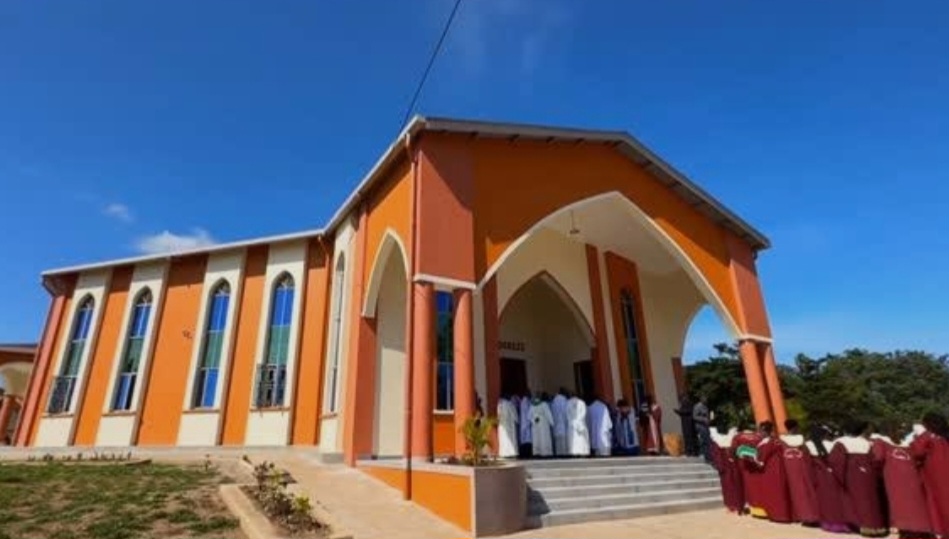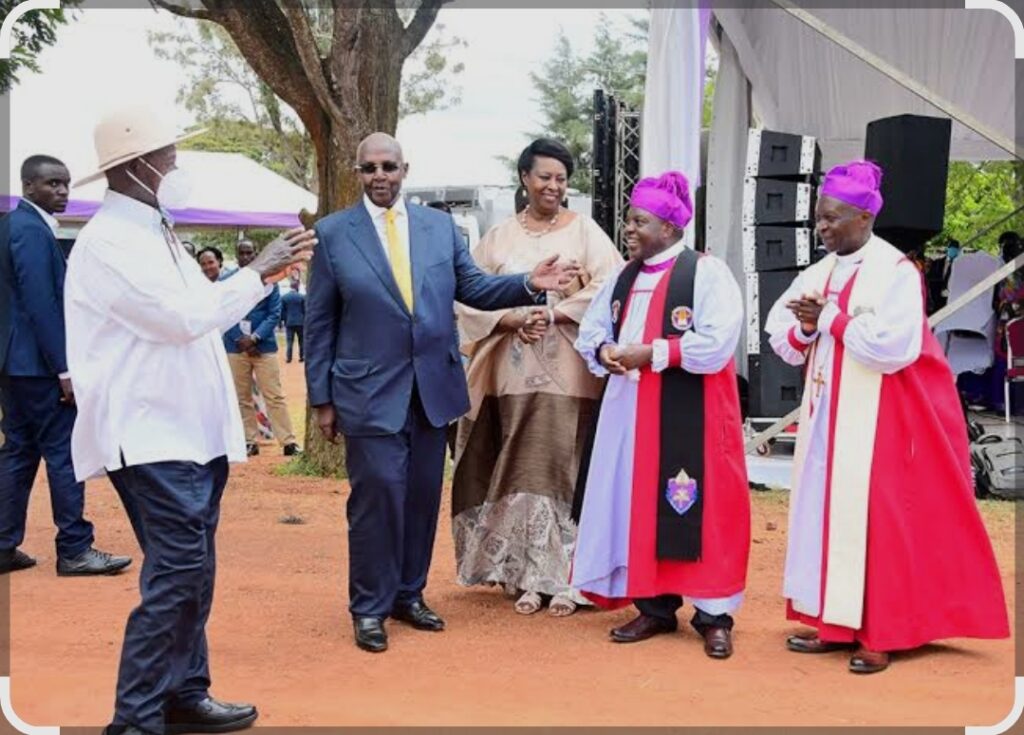In the heart of Sembabule District now stands a monumental structure – All Saints Church, a towering symbol of survival, gratitude, and faith. But its story begins not with bricks and mortar but in a hospital room, far from home.

Sam Kutesa, Uganda’s former Minister of Foreign Affairs, recently opened up in a viral video about his near-fatal battle with throat cancer, which he quietly fought and overcame after receiving treatment in Germany in 2022. In that moment of fear and vulnerability, Kutesa made a solemn vow to God: if he survived, he would build Him a church.

That vow now stands tall in Sembabule, a gleaming sanctuary said to have cost over UGX 3 billion. “I promised God,” Kutesa told a packed congregation. “And I’m here today because He kept His promise to me. This church is my way of keeping mine.”
The official opening of All Saints Church – Sembabule was graced by President Yoweri Museveni, who commended Kutesa and his partners, including Tororo Cement, for turning a personal testimony into a gift for the community. “This is a sacred symbol,” the President said. “An act of faith that will bless many.”

Yet not all reactions have been celebratory.
On social media, a wave of public debate erupted almost instantly. Many Ugandans questioned the priorities, arguing that the UGX 3 billion could have transformed cancer treatment back home, where facilities remain critically underfunded and overstretched.
“Instead of flying to Germany for care, why not build a center so Ugandans can survive cancer too?” one user posted. Others took a more sarcastic tone: “At least now we know where to go for healing Kutesa’s Cathedral of Miracles!”
Despite the controversy, one thing is clear, this is more than a building. For Kutesa, it is a personal altar. For believers, it may become a place of hope. And for the nation, it is a symbol stirring powerful conversations about healing, both spiritual and systemic.



